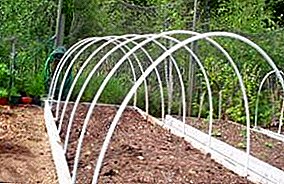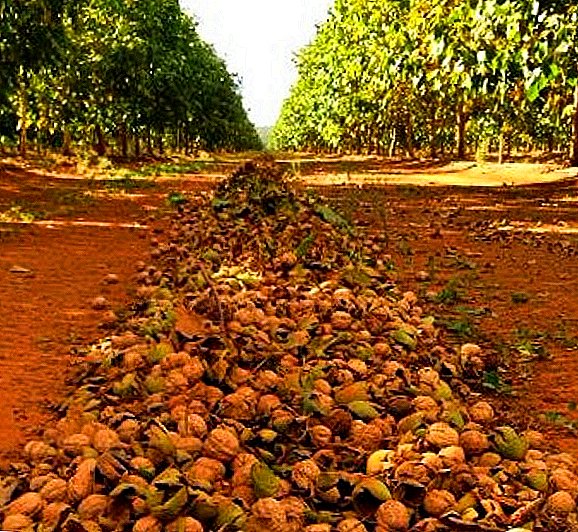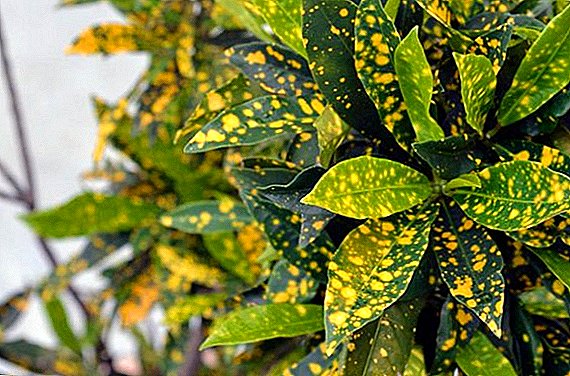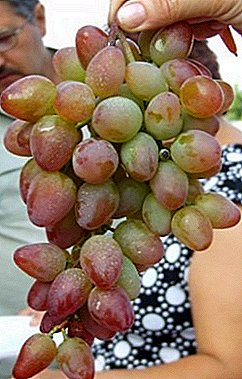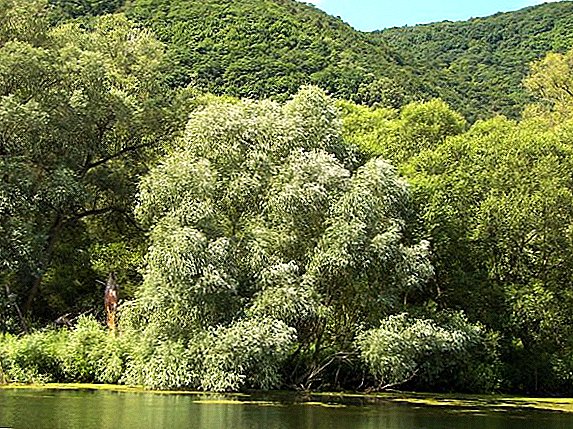
Wild garlic is a perennial herb of the onion family, with a mild garlic flavor and aroma. In another it is also called wild garlic, or in more rare cases, its name is “bear bow”.
Due to its taste and healing properties, this plant has long been successfully used both in cooking (for salads, pickling, etc.), and for medical purposes (treatment of diseases of the gastrointestinal tract, respiratory system, thyroid gland, etc.) .
Although the garlic resembles garlic in taste and smell, the plant nevertheless belongs to the onion family. Therefore, wild garlic can be called both onion and garlic, or in other words, wild onion with a garlic smell. In the article we will describe the characteristic features of this plant and useful properties, as well as show its photo.
Appearance and other features
The stem of the plant has a triangular shape and reaches a height of 15-50 cm. At the same time, the leaves grow from the very base and have a wide elongated shape (in distant comparison it resembles lily of the valley). The size of the bulb is no more than 1 cm in diameter. At the beginning of May, the ramson begins to bloom, forming light (or white) flowers of small size, collected in the so-called. "umbrellas".
Characteristic differences
 Despite the taste and aroma similar to ordinary garlic, the plant still has some distinctive features, for example:
Despite the taste and aroma similar to ordinary garlic, the plant still has some distinctive features, for example:
- Leaf shape - green garlic leaves are thin and long (in the form of "arrows"), and wild garlic is extended like lily of the valley.
- Taste and smell - ordinary garlic, in contrast to the wild, has a more pronounced sharp taste and aroma.
- Tuber size - garlic, unlike garlic, has a very small tuber (some say it is practically absent).
Ramson and ordinary garlic are completely different plants, the first of which grows mainly in the wild, while the second is a domestic domesticated species.
Benefit
Among the useful properties of wild garlic are the following:
- Improves digestion (promotes the development of gastric juice).
- Increases appetite.
- It has a powerful bactericidal action.
- Stimulates heart activity.
- Improves metabolism (including helps to lose weight).
- It has a tonic effect (enhances the protective functions of the body).
- Warns the formation of cholesterol plaques.
- Used externally to treat skin diseases (ulcers, warts, etc.).
- Reduces blood pressure (with regular use).
- It is used for colds, rheumatism, intestinal infections.
- Charges the body with energy and vigor.
- It has antiparasitic effect.
But beyond that wild garlic saturates the body with a mass of nutrients, among which:
- Vitamin C.
- Vitamins of group B.
- A nicotinic acid.
- Organic acids.
- Carotene.
- Phytoncides
- Cellulose.
To achieve the maximum therapeutic effect, the plant is recommended to be consumed fresh.
We offer to watch a video about the benefits of wild garlic:
Harm and contraindications
 Like any product, wild garlic has some negative features, i.e. not suitable for everyone. In particular, the juice of the leaves of the plant has an aggressive effect on the gastric mucosa, so it should not be eaten on an empty stomach. For the rest (with the exception of contraindications), wild garlic does not pose any threat to the organism if it is added to food in small quantities.
Like any product, wild garlic has some negative features, i.e. not suitable for everyone. In particular, the juice of the leaves of the plant has an aggressive effect on the gastric mucosa, so it should not be eaten on an empty stomach. For the rest (with the exception of contraindications), wild garlic does not pose any threat to the organism if it is added to food in small quantities.
Ramson is contraindicated in the following cases:
- With diseases of the stomach (gastritis, ulcer).
- With pancreatitis.
- During pregnancy and breastfeeding.
- With individual intolerance to the product.
Is it possible to grow alone or better to collect in nature?
Wild garlic can be grown at the dacha, only one circumstance needs to be taken into account by a gardener: wild garlic grows rather slowly, reaching normal size only in the third year after sowing.
However, in this case, you can be sure of the purity and environmental friendliness of the product.
Harvesting garlic in nature is recommended away from highways, factories and plants.. The ideal option is a wild woodland (for example, a taiga zone) or a forest lawn. The best time to collect is from April to June.
If the gardener decides to grow wild garlic in the garden, it is advisable to consider the following factors before planting:
- To propagate a plant is better not by an onion, but by seeds (this way it takes root faster).
- Sowing should be carried out in the winter time (seeds need to lie for at least three months to get good shoots).
- Best of all ramson grows in a moist shaded environment.
How to use?
The plant is eaten both as a whole and added to culinary dishes.. Also from it are preparing various healing tools.
In cooking
Salads, sauces, patties are prepared from the plant, salted and dried for the winter. Here are some of the dishes that can be prepared in a hurry.
Salad with ham and egg
 Ingredients:
Ingredients:
- wild garlic (200 g);
- ham (150 g);
- boiled eggs (3 pcs.);
- thick sour cream (3 tbsp. l.).
Cooking:
- Grind eggs and ham.
- Finely chop the garlic and salt it.
- Combine all the ingredients, season with sour cream, add salt and pepper to taste.
Salad vitamin, spring
Ingredients:
- wild garlic (500-700 g);
- fresh eggs (2 pieces);
- 2 fresh cucumbers;
- fat cream - 2 tbsp. l .;
- mayonnaise - 2 tbsp. l ...
Cooking:
- Grind wild garlic and salt.
- Carefully combine greens with eggs.
- Cut cucumbers are not very small.
- Add sour cream and mayonnaise and mix well.
A mass of wild garlic with eggs and sour cream can be used to make a cake or pies.
We offer to watch a video on how to cook spring salad of wild garlic:
In folk medicine
Ramson can make the following remedies.
Compress on purulent wound
What is needed:
- fresh ramson in small quantities;
- sterile bandage.
Application:
 Grind the plant (before the formation of juice).
Grind the plant (before the formation of juice).- Attach to the affected area and bandage.
- After 2-3 hours, remove the bandage (without washing, dry the skin).
The tool is recommended to use 1-2 times a day (depending on the severity of inflammation). Duration of therapy: 5-7 days.
If the plant is used externally, allergic reactions (rash, redness, itching) are possible. If such signs appear on the skin, the treatment should be stopped.
Cold infusion
What is needed:
- ramson leaves and stems (300 g);
- raspberry leaves (100 g);
- vodka (200 ml).
Cooking:
- Mix wild garlic with raspberry leaves.
- Add vodka, close the container with a lid and shake well.
- Remove to a dark place for 2 weeks.
Course of treatment: 7 days (or until complete recovery).
Conclusion
Wild garlic, or ramson, is a natural source of essential substances for the body., and it can be used not only in food, but also for medical purposes. However, its use must be approached with caution, because the plant is irritating to the mucous membrane of the stomach. Unsafe plant can be in the case of allergic reactions (for external use).
Otherwise, wild garlic can be a fragrant seasoning in the preparation of culinary dishes and a healing component with a weakened immunity.


 Grind the plant (before the formation of juice).
Grind the plant (before the formation of juice).



